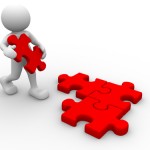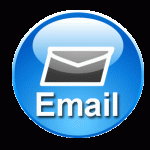Are You Managing Email or is it Managing You?
Oh, oh. This turned out to be a bit longer post than I wanted so please excuse the length. Since we’re on the topic of email this week, I thought it would be useful to explain how to managing email instead of letting it manage you. We all do this differently but this is what works for me.
The Objective
Your objective for managing email should be to have a virtually empty inbox. If you manage to achieve this you’ll be in control, organized, and responsive to those who are seeking your attention.
Get Organized
Before you start dealing with email you need to get organized. Just as you would have file drawers and file folders for every paper you touch, so must you have folders and files for each and every project you are working on. Organizing email by project means that it is easy to understand where an email would be filed and you can find it quickly without a search tool.
First In, First Out
The next thing you must organize is the order in which emails are presented. You should organize them, not with the most recent at the top but the most recent at the bottom. Organizing them at the top means that you can leave emails alone as they drop farther and farther down the window until they are out of site and forgotten. If the oldest ones are at the top it is saying that you have to deal with these first before you get to the newer ones. First in First out. Not Last in First Out. If you control the receipt to the bottom and have to deal with older ones first, filing them when you are finished in project oriented files then you will only have things in your inbox that you have not dealt with yet.
Process Email in Batches
If you look at email all day long then you’re letting it run your life. If you handle it only once a day you’ll get overwhelmed. The key to email is processing it in batches. The best way to do this is to make sure that you reserve time for email between formal meetings, handling those that just came in at the beginning of the day and then once every two hours or so for only a few minutes. If you do this, you’ll be managing email instead of letting it manage you.
Limit the Number of Touches
Now all the experts will tell you to handle email only once but that isn’t very realistic. I figure if you limit yourself to handling each email only twice then you’re doing well.
When you get back to your desk after a meeting then the first thing to do is to read all of the email that you received while you were out. That is handling it the first time. Looking at all of it at once allows you then to prioritize your email instead of doing it on a first in first out basis. While you might think that the next thing to do is to deal with the most important email first, this is exactly the wrong thing to do. What you need to do next is email management. Get rid of all the email that does not need more than a two word reply.
- Delete any junk email
- File any email that does not need a reply in the appropriate folder.
- File any emailed newsletters in a file to review on Friday afternoons or at lunch time. This is a file that can accumulate as it doesn’t really matter if you ever read these.
- Send replies or delegate quickly any things that can be handled by others.
If like most people, you are getting and sending an average of 110 emails a day, then about 10 or 20 of them will not fall into those categories. Dealing with the unimportant emails first in the manner specified above will take about five minutes every time you sit down to deal with email. If you have left an hour between meetings then you’ll have lots of time to deal with the two or three important emails you get that require some work or a longer response.
More Complex Emails
Now to the ones that require some work, the key is to think about them for a while. Don’t do them right away. Target though to get them dealt within 24 hours of their receipt. Giving yourself time to think about how to deal with them will mean that you handle them twice or even three times but that should give you time to figure out if they are material and how you can do the least amount of work possible and still meet the other person’s needs. When you are ready and only when you are totally ready ten deal with the mail and file it away. In this way you should be able to maintain an inbox that is relatively clean.
If you have something that you cannot deal with right away, send a response indicating when the person should expect a full response. If there is something that you need to follow up on then establish another folder for follow up items that you check once a day.



